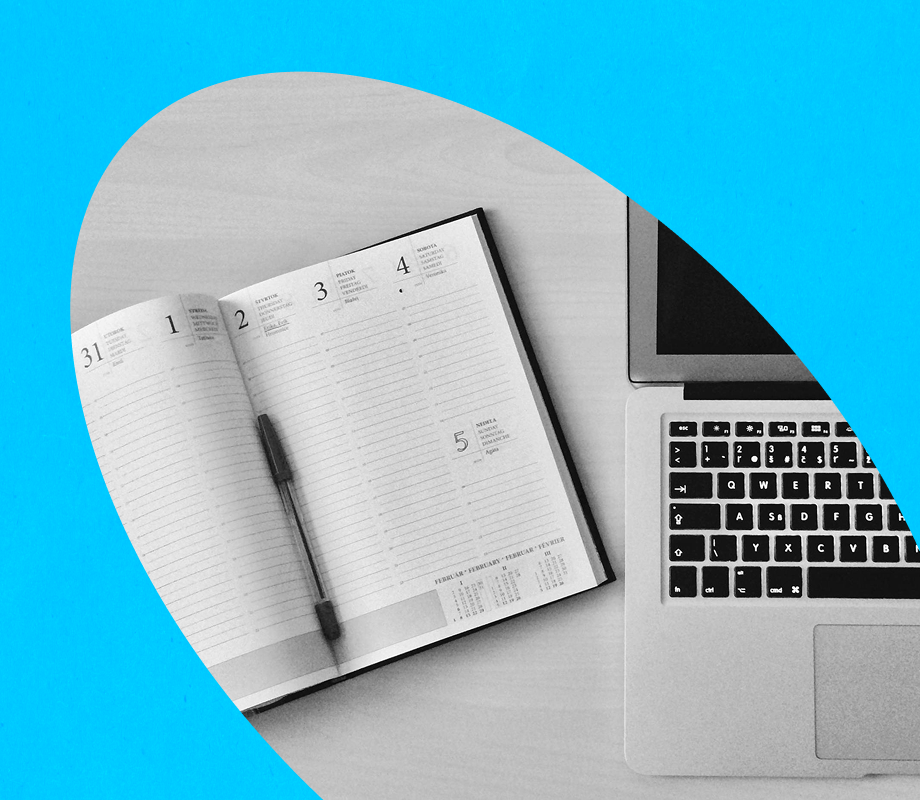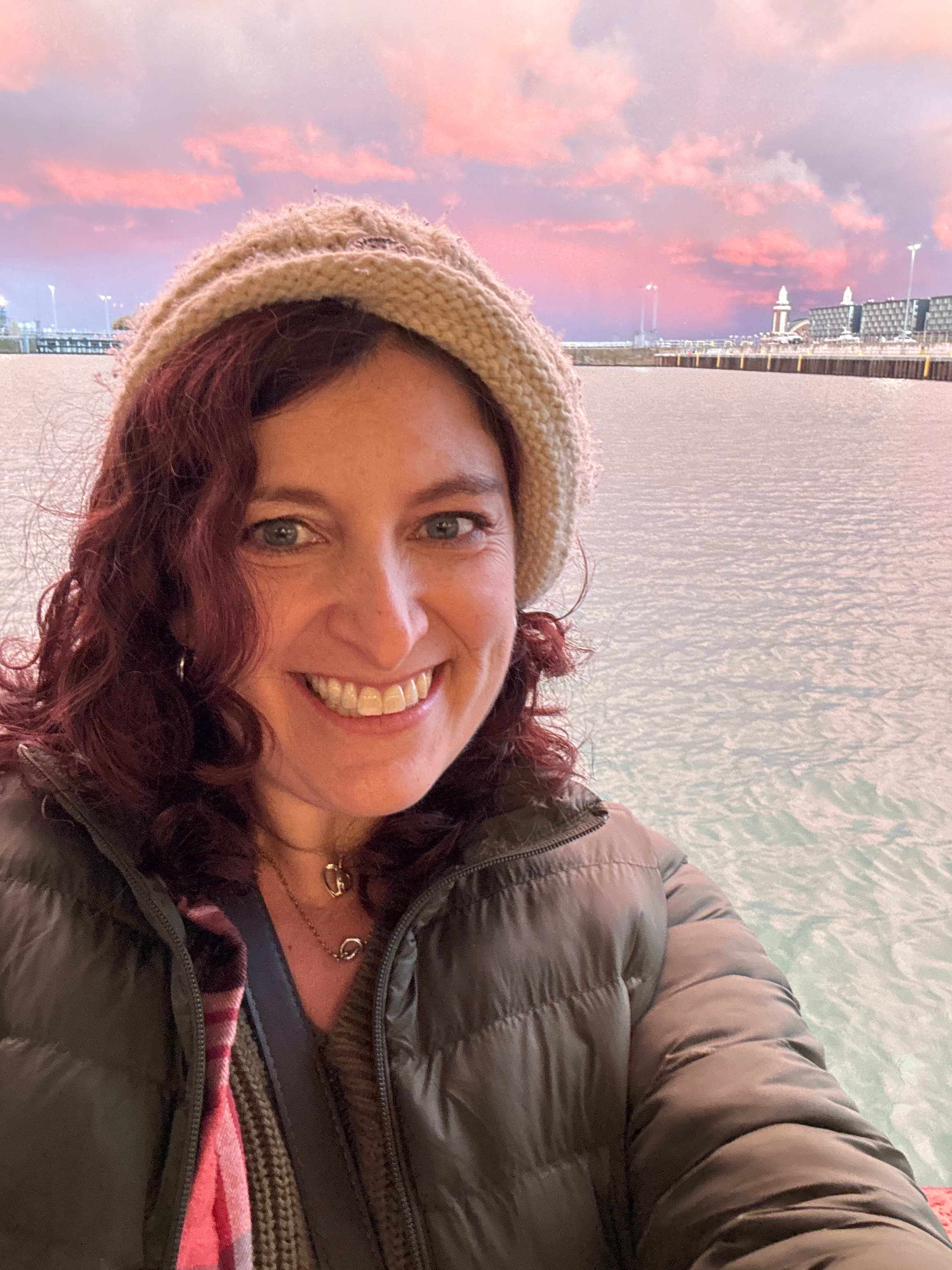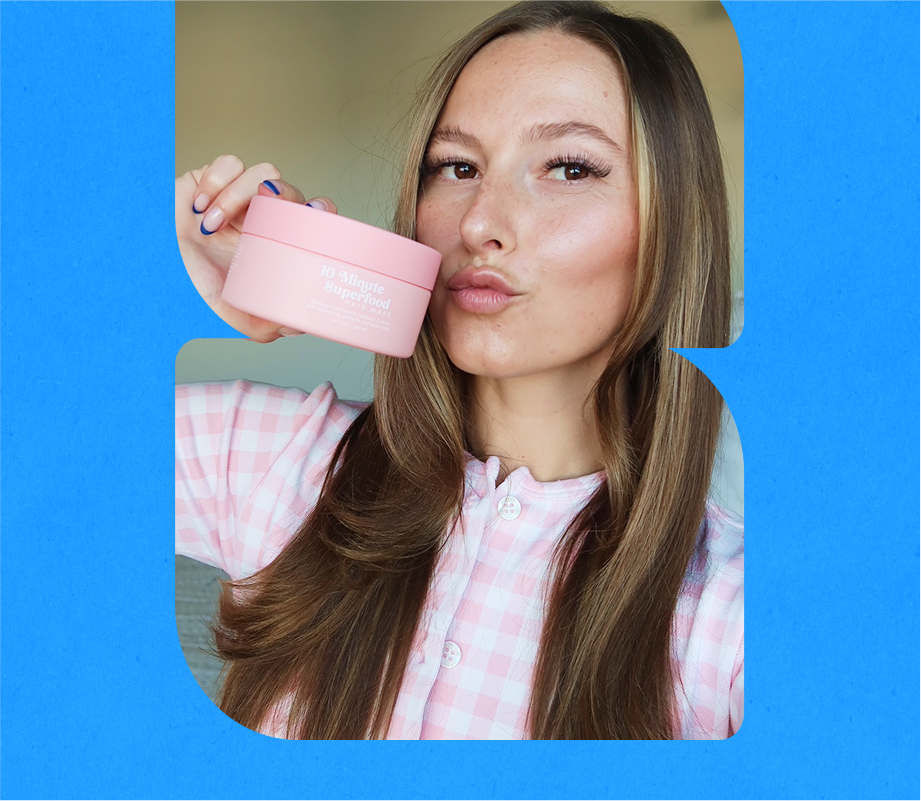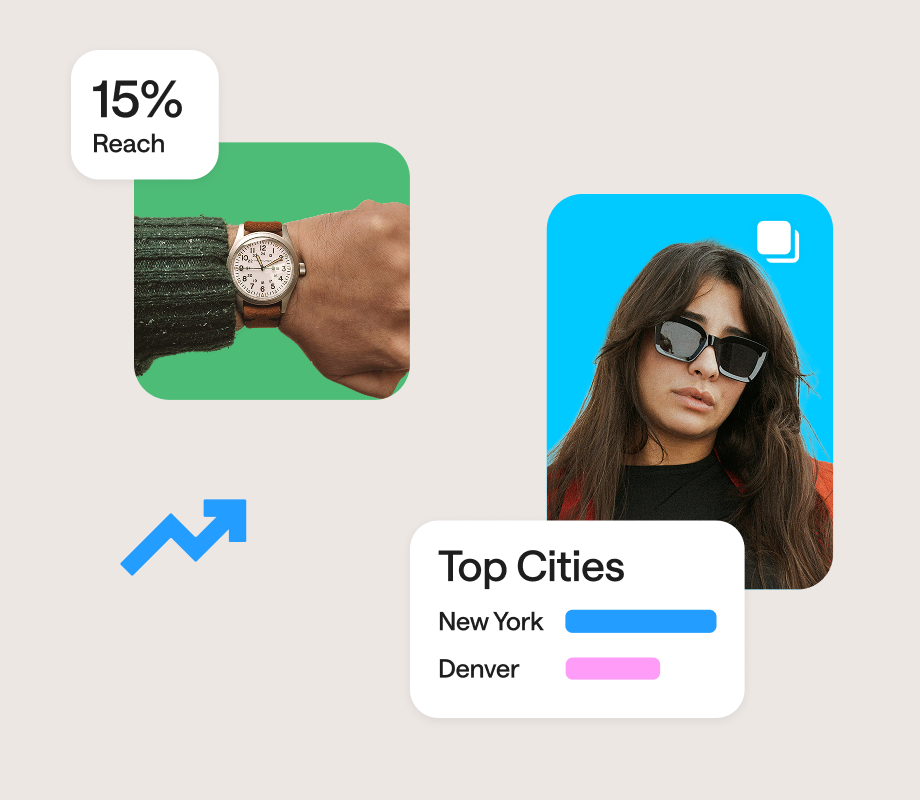Influencer campaigns have many moving parts, but the right approach transforms them from complex juggling acts into powerful tools for building lasting partnerships with creators. Build a solid timeline from the start, and you'll run successful campaigns that deliver results and strengthen creator relationships.
Fleshing out and sticking to a timeline for influencer marketing campaigns keeps everyone on the same page, simplifying everything from negotiations to approvals to launches. This article has everything you need to put together effective timelines for your influencer campaigns, including expert tips from Later.
Want help building better campaign timelines? Book a Later Influence demo to see how we streamline every step—from outreach to reporting.
Table of Contents
- Why every influencer campaign needs a clear timeline
- How influencer campaign management has changed
- The ideal influencer campaign timeline: Step-by-step breakdown
- Timeline variations by platform & campaign type
- Tools to help you plan faster
- Real influencer campaign timeline examples
- Expert tips for staying on schedule
- Final takeaways
Join over 1 million marketers to get social news, trends, and tips right to your inbox!
Email AddressWhy every influencer campaign needs a clear timeline
Timelines keep everyone happy. When social media managers, creators, and brands all have a reference point for where the campaign is and what they need to do next, stress levels go down, and ROI goes up.
Without timelines, you open the door for campaign-killing setbacks to surface. For example, rushed campaign briefings because of unclear deadlines can lead to misunderstandings in the tone or messaging of the content. When the influencer submits their work and needs to reshoot it, both sides will be frustrated.
How influencer campaign management has changed
In 2025, new technologies and strategies have already changed how to plan an influencer campaign. AI tools analyze enormous data sets to match brands with the right influencers. New content formats like augmented- and virtual reality pave the way for new marketing opportunities. Upgraded collaboration platforms let brands and creators curb the endless back-and-forth of messages and lean into more efficient workflows.
Luckily, platforms like Later let you take advantage of these innovative tools and technologies in one place, making influencer campaigns easy and effective. You can set up your campaign with a virtual calendar, track and analyze your campaign's performance, and use AI tools to generate captions all from Later’s dashboard.
The ideal influencer campaign timeline: Step-by-step breakdown
Influencer campaign timelines come in all shapes and sizes, but having a basic model to aim for is nice. This step-by-step timeline breakdown isn't a hard and fast rule, but you can use it as a foundation for your influencer campaigns.
0. Strategy & goal setting (1–2 weeks)
Before reaching out to influencers, have your goals nailed down and know how you'll achieve them. Objectives can range from raising awareness to generating leads to driving conversions.
You'll also need to determine which key performance indicators (KPIs) to use to determine success. A campaign that boosts brand awareness should have KPIs linked to content reach, impressions, and views. However, you need the right people to get your message. Because of this, zeroing in on a target audience is also a key element that will help you decide which influencers to leverage for your business goals.
The platform you choose also makes a big difference in your results. For example, TikTok can introduce new audiences to your brand because of its potential virality. On the other hand, YouTube’s long-form video gives you more time to pitch your product and convert prospects.
1. Creator sourcing & vetting (1–2 weeks)
Find influencers who align with your target audience, message, and campaign goals. Consider your budget and decide if hiring one macro influencer with 250,000 followers beats five niche creators with 20,000 followers for the same price. To speed up onboarding, platforms like Later use data-driven insights to match your brand with effective influencers for your campaign.
After creating a short list of candidates, contact them to gauge their interest and availability. Ask questions to understand their aims, audience, and values to see if they fit the campaign. Send an influencer campaign proposal explaining the campaign objectives and possible ideas.
Once you've found a match, conduct negotiations and draft a contract. Your legal department should review all contracts before sending them out for creators to sign.
2. Briefing & creative alignment (1 week)
With your creators in mind, you can create clear influencer briefs. A brief should include your brand description, key messaging, and deliverables. State your campaign goals, like spreading awareness, encouraging engagement, or driving sales.
While allowing the influencers the creativity to be themselves is important, you’ll also want to set boundaries. This can protect your brand from reputation damage if they drop an offensive Instagram Reel and prevent arguments if they need to make revisions.
Once you complete the brief and send it out, hold a kickoff call with each creator involved. Allow them to ask questions and clarify any details to prevent misunderstandings.
3. Content production (1–3 weeks)
Production time will vary depending on the creator and the type of content, so plan appropriately. For instance, creating a Facebook post might take an hour or two, while a 15-minute product review for YouTube could take days. Speak with the influencers to understand how long it will take them to go from ideation to filming to editing.
Keep in mind that user-generated content (UGC) and sponsored content might require different timelines to complete, too. UGC is unpaid, organic content created by people who use a brand's product or service, which brands then share on their own accounts as a way to spread authentic messaging. Sponsored content goes onto the influencer’s channel. Because sponsored content will appear on a channel outside the brand’s control, there are strict guidelines and more revisions.
4. Approval & revisions (3–5 days)
Based on feedback from the creators, assign deadlines for when they must submit the content. Taking advantage of an approval platform like Later, Notion, or Google Drive makes for a smooth workflow. These workspaces allow brands and creators to communicate, share content, leave feedback, and upload revisions quickly.
5. Go-live window (1 week)
With your completed content in stock, you’re now ready to publish it. Coordinate the posts around a key event like a product launch, promotion, or special event for maximum effect.
For best results, upload and schedule the content to a social media content calendar ahead of time. For example, Later’s content calendar lets you visually organize your content across multiple platforms to take advantage of cross-channel amplification. With everything locked into the virtual calendar days in advance, you won’t need to worry about unexpected issues like connectivity problems or technical glitches.
6. Reporting & optimization (1–2 weeks post-launch)
Even after the content is out, there’s still work to do. In the weeks after the launch, you’ll need to monitor the progress of your campaign to optimize the results and gain insights that you can put toward the next one.
Keep track of influencer marketing KPIs like individual creator performance stats, engagement, and UTM data, which is text that you add to a link for better tracking. Platforms like Later’s influencer analytics tool make data analysis and reporting second nature. Figure out what content exceeded expectations and then find ways to repurpose it to maximize value. The detailed analysis also gives accurate figures for ROI, which should influence future campaigns.
Want to bring this timeline to life? Book a Later Influence demo to see how we help you manage every step—from strategy to reporting—with ease.
Timeline variations by platform & campaign type
You'll need to adjust your timeline according to the needs of your specific campaign. Always-on campaigns are continuous marketing efforts that usually center around increasing brand awareness. You may be working on other projects, but you'll be posting content in the background.
Short-burst campaigns focus more on getting users to take action, like buying a product. These campaigns often last a few weeks to a month and involve a sudden influx of posts.
Campaigns can also be event-based or evergreen. Event-based campaigns launch around specific promos, holidays, or festivals, while evergreen campaigns remain relevant for the long term.
The platform you use also makes a big difference. For example:
TikTok: A TikTok campaign might be fast as trends pass quickly on the platform. You may use several creators to create enough content to post daily for a few weeks.
Instagram: A campaign focusing on Instagram Reels and Stories will require a lot of content with short lifespans of 24 to 48 hours.
YouTube: Long-form YouTube videos take much longer to make than short-form videos, so expect creators to require more time in the creation process.
Threads: Threads might require one or multiple team members to post text messages and respond to replies for an hour a day or more for the campaign's duration.
Depending on your goals, you can mix paid ads with organic content to fit the best timeline.
Taking advantage of the newest technology can help speed up your timeline. Here are some tools to keep an eye on:
Project management: Project management tools like Trello and Asana keep your workflow centralized, allowing team members to stay on task with due dates, approvals, and tasks.
Influencer platforms: Use influencer platforms like Later to ease campaigns by simplifying outreach, streamlining contracts, and tracking campaign performance metrics.
File sharing: Cloud platforms like Google Drive make team collaboration easy as everyone can store, retrieve, and view files in real time from the same place.
Communication tools: Keep misunderstandings to a minimum with a communication tool like Slack, where the whole team can come together virtually, and past communications are searchable.
Influencer marketing services: Influencer marketing services handle the challenging aspects of campaigns, like coordinating with creators and constructing timelines. Use Later’s award-winning influencer agency services to speed up your campaign.
Want to fast-track your next campaign? Book a Later Influence demo to see how our platform and services make campaign management simpler—from outreach to reporting.
Real influencer campaign timeline examples
Real influencer campaign examples can help you understand the importance of using timelines. Brew Dr. Kombucha, a beverage company based in Portland, Oregon, creates its content in-house. To save time, they’ve leaned on Later’s Visual Planner to organize and schedule Instagram posts. Despite having a small team, Brew Dr. Kombucha has been able to share content consistently and build a loyal audience.
In another example, American Greetings, a greeting card brand, used Later Influence to plot a campaign based on seasonal promotions. We assisted American Greetings with several influencer campaigns, coordinating with nearly 400 influencers and creating over 1,200 pieces of content. Because of the success, American Greetings and Later Influencer plan to launch an ambassador program to take the brand to the next level.
Expert tips for staying on schedule
Buffer time is your friend, even though it might mean extending the campaign. No matter how well you plan, there's always the chance of a malfunctioning SD card or an unexpected round of revisions. Adding extra time eases stress and keeps things on schedule.
Creators and influencers are busy people. If they're tackling everything by themselves, they’ve got a lot of tasks to worry about, from coming up with new ideas to marketing their content. They may also be working with other clients, so it’s always best to confirm their availability upfront. Hinging your plans around one influencer only to find out they’re unavailable when you need them can devastate your campaign. Similarly, make sure to include all dates and deadlines in the contract. You can hold them accountable if you confirm availability and the creator doesn’t deliver.
Finally, when building out your influencer campaign, avoid starting near a holiday or during major events. These are busy times, and influencers (and your team members) often have full schedules. Holiday influencer marketing can be a powerful tool, so long as you begin planning well ahead of time and everyone is on the same page.
Final takeaways
Timelines make influencer campaigns smoother, better, and more lucrative. You don’t need to be an expert to create a clear and effective timeline. You can let the experts do it for you. At Later, we pride ourselves on our influencer marketing services and how we can boost your brand’s impact through influencer campaigns.
Want a smoother influencer campaign—without doing it all yourself? Book a demo to see how Later’s influencer marketing services help you build clear timelines, drive results, and save time.




